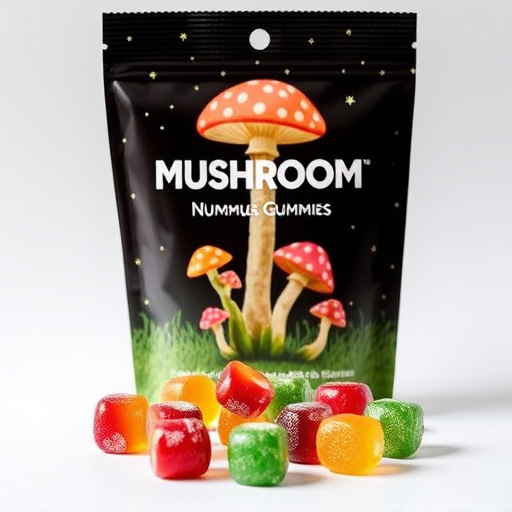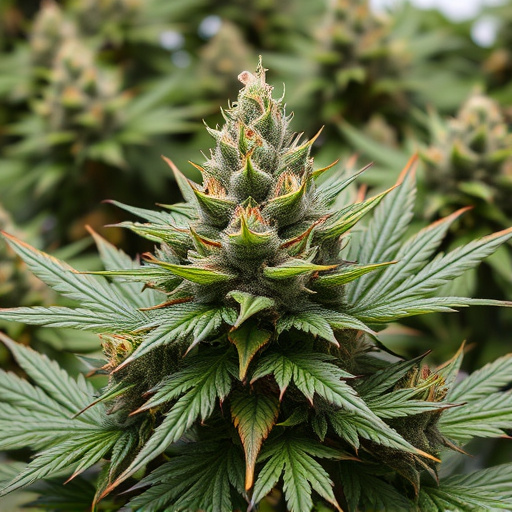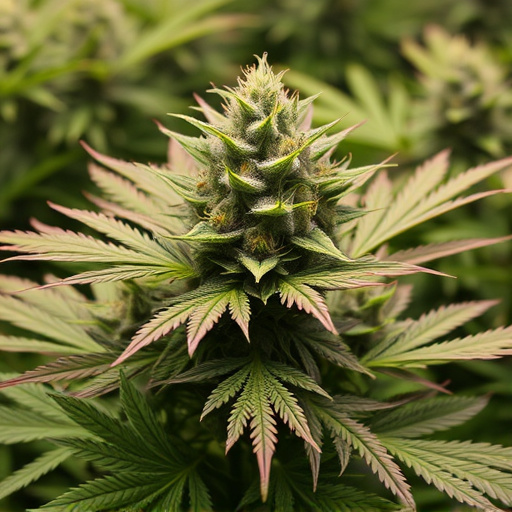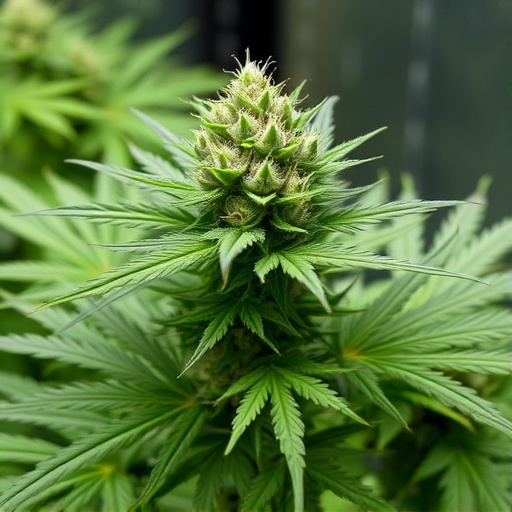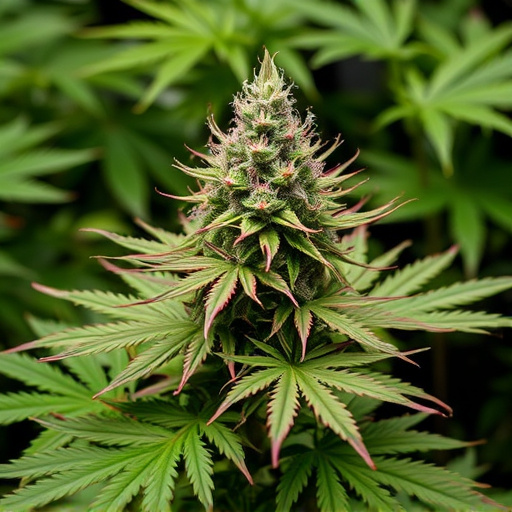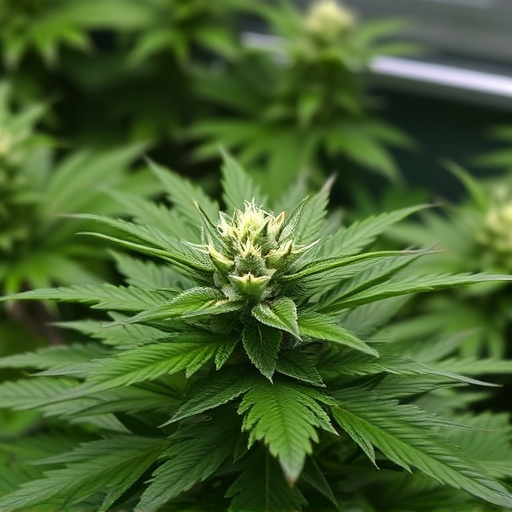THC, the primary psychoactive compound in cannabis, significantly impacts physiological processes, particularly hunger and appetite by binding to CB1 receptors in the brain. This interaction alters eating behavior, often leading to increased appetite or "the munchies." High THC content strains like Sativa ('Blue Dream', 'Green Crack') and Indica ('Granddaddy Purple', 'Northern Lights') are among the easiest cannabis strains to grow for medical users seeking appetite stimulation. While beneficial for conditions like anorexia, individual responses vary, and long-term use carries potential risks and dependencies. Home cultivation of Indica strains offers a controlled way to explore these effects.
“Unraveling the intricate relationship between THC (tetrahydrocannabinol) and hunger hormones opens a fascinating window into cannabis’s effects on appetite. This article delves into how THC interacts with our body’s natural hunger signals, offering insights that cater to both scientific curiosity and practical applications.
We explore the ‘easiest cannabis strains to grow’ for those seeking specific therapeutic benefits, focusing on their impact on appetite. Additionally, we discuss potential advantages and considerations for users, providing a comprehensive guide to understanding THC’s role in hunger regulation.”
- Understanding THC and Its Interaction with Hunger Hormones
- The Impact on Appetite: Easiest Cannabis Strains to Grow for Different Effects
- Potential Benefits and Considerations for Users
Understanding THC and Its Interaction with Hunger Hormones
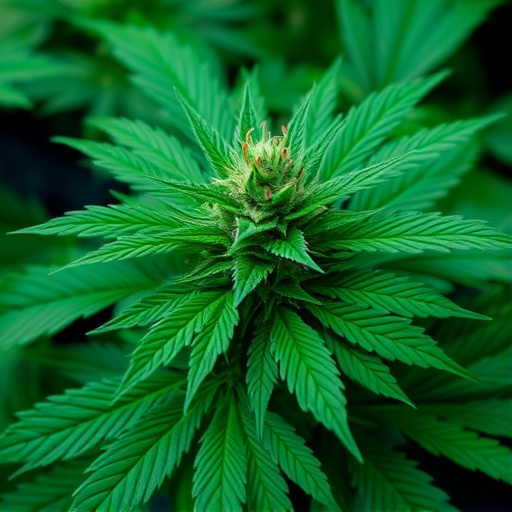
THC, or tetrahydrocannabinol, is a primary psychoactive compound found in cannabis that has been extensively studied for its effects on various physiological processes, including hunger and appetite. When consumed, THC binds to specific receptors in the brain, known as CB1 receptors, which play a significant role in regulating hunger and satiety signals. This interaction can lead to changes in eating behavior, often resulting in increased appetite or what is colloquially referredd to as “the munchies.”
Research suggests that THC influences hunger hormones by impacting the production and release of neuropeptides that signal hunger and fullness. For instance, it may suppress the hormone leptin, which signals satiety to the brain, while simultaneously increasing levels of ghrelin, a hunger-stimulating hormone. This complex interplay can contribute to the well-documented effect of cannabis on food intake and is one of the reasons why certain strains, known for their high THC content, are considered easier to grow due to their potential to stimulate appetite in medical users.
The Impact on Appetite: Easiest Cannabis Strains to Grow for Different Effects
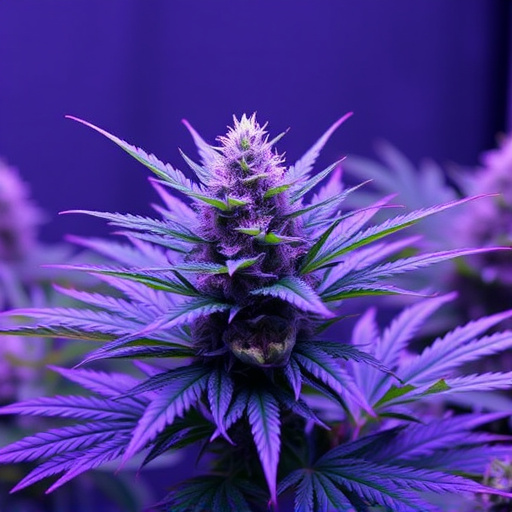
Cannabis has long been known for its effects on appetite, with THC playing a significant role in this process. When consumed, THC interacts with the body’s endocannabinoid system, which regulates various physiological processes, including hunger and satiety. This interaction can lead to an increase in appetite, often described as a “munchies” effect, where individuals experience a strong desire to eat.
When considering the easiest cannabis strains to grow for those looking to explore this effect, several options stand out. Sativa strains are generally known for their invigorating and uplifting properties, which can stimulate appetite. Strains like ‘Blue Dream’ or ‘Green Crack’ are popular choices due to their potent THC content and easy cultivation. Indica strains, on the other hand, offer a more relaxing and sedative experience, potentially enhancing hunger without overstimulation. ‘Granddaddy Purple’ and ‘Northern Lights’ are highly recommended for their balanced effects and relative ease of growth.
Potential Benefits and Considerations for Users

For those who use cannabis, understanding how THC influences hunger hormones can offer both potential benefits and considerations. Research suggests that THC can stimulate appetite, making it a valuable tool for individuals struggling with conditions like anorexia or weight loss due to chronic illness. By increasing levels of ghrelin, a hormone that triggers hunger, THC may encourage users to eat more, potentially leading to improved nutrition and overall well-being.
However, it’s important to note that the effects can vary greatly among individuals. Some users may experience increased appetite, while others might not notice any change or even report decreased hunger. Additionally, long-term cannabis use for solely appetitive purposes is relatively unstudied, with potential risks and dependencies to consider. For those interested in cultivating their own cannabis, some of the easiest strains to grow at home include Indica varieties known for their relaxing and appetite-stimulating properties, offering a natural way to explore these effects while maintaining control over dosage and quality.
THC’s influence on hunger hormones offers both intriguing possibilities and important considerations for users. While it can stimulate appetite, leading to potential benefits for those struggling with eating disorders or weight gain, it’s crucial to understand individual responses vary greatly. The article has explored how different cannabis strains, known as the easiest cannabis strains to grow, can impact appetite and highlighted key points for consumers. Remember that further research is needed to fully comprehend THC’s complex role in hunger regulation, emphasizing the importance of responsible use and ongoing scientific exploration.
